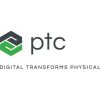Ohayou Gozaimasu. This week the term, specific to Japan, the doctor would like to introduce to the readers, is “
hara-kiri.” According to Merriam-Webster’s Dictionary, the origin of the word comes from the terms “hara” belly and “kiri” cutting. This ritualistic form of suicide is at times contemplated by many stressed-out quality and regulatory folks tasked with attempting to keep up with all of regulatory changes happening on a frequent basis, worldwide. Dr. D feels your pain, as one can easily be overwhelmed with the onslaught of regulatory changes as the medical device industry grows increasing complex. As the doctor labors over his laptop, week-after-week, to ensure the content of
Devine Guidance (DG) provides some sciental (look-it-up) value for the readers; the main focus of DG will continue to be compliance with regulatory requirements.
One final point Dr. D would like to make before diving into this week’s guidance is the evils associated with taking short-cuts. When installing a QMS, please do it right the first time. Make sure input is obtained from all members of your organization; and if necessary, hire an experienced consultant (like Dr. D) to assist with the QMS development and implementation.
Ministerial Ordinance Number 169 (2004)
Chapter Two “Manufacturing Control and Quality Control in Manufacturing Sites of Medical Device Manufacturers, etc.”
Section Four – Resource Management
(Provision of Resources)
Article 21 The manufacturer, etc. shall determine and provide the resources needed for the following duties.
- To implement the quality management system and to maintain its effectiveness, and
- To meet the regulatory and customer requirements.
(Personnel)
Article 22 The manufacturer, etc. shall ensure that the personnel performing the work affecting the product quality are competent on the basis of the following requirements.
- The appropriate training, and
- The appropriate skills and experience.
(Competence, Awareness and Training)
Article 23 The manufacturer, etc. shall conduct the following duties.
- To determine the necessary competence for the personnel performing the work affecting the product quality,
- To establish the documented procedure for identifying the training needs,
- To provide training or take other actions to satisfy the needs determined by the documented procedure specified in preceding Item (2),
- To evaluate the effectiveness of the actions specified in preceding Item (3),
- To ensure that the personnel are aware of the relevance and importance of their activities and how they contribute to the achievement of the quality objectives, and
- To maintain appropriate records of the training, skills and experience.
(Infrastructure)
Article 24 The manufacturer, etc. shall determine, provide and maintain the following infrastructure, as applicable, needed to achieve the conformity to the product requirements.
- The buildings, workspace and associated utilities,
- The process equipment (both hardware and software), and
- The supporting services (such as transport or communication).
- The manufacturer, etc. shall provide and maintain the following infrastructure in case where they manufacture the following products.
(1) For the products which need the control of dust, humidity, insects and rodents, the buildings or facilities for controlling dust, humidity, insects and rodents,
(2) For the products of which manufacturing process the poisonous gases are handled, the facilities necessary for disposing of such poisonous gases,
(3) For the products in a form of liquid, sol, gel or powder (excluding those concerned with the sterilized medical devices), the work rooms that meet the following requirements,
a. Being the buildings which do not allow passage of the personnel other than those conducting operations in such work rooms, with the proviso that this provision shall not apply in case where the products, etc. could not be contaminated by the personnel other than those conducting operations in such work rooms,
b. Not being provided with the entrances directly leading to the outside (except those for emergency), with the proviso that this provision shall not apply in case where the work rooms are provided with the buildings and facilities necessary for preventing contamination due to the outside,
c. Being provided with the entrances and windows that can be closed,
d. Being provided with the buildings and facilities necessary for preventing contamination by dust or microorganisms according to the type and manufacturing process of the products, with the proviso that this provision shall not apply in case where the manufacturing facilities, etc. provide equivalent functions,
e. Being provided the effluent facilities, in case where they are provided in the work rooms, with the buildings necessary for preventing contamination of the work rooms, and
f. Being provided with the facilities for supplying water of the quality and quantity necessary for the manufacturing, according to the type and the manufacturing process of the products.
- The manufacturer, etc. shall establish the documented requirements for the maintenance activities, including their frequency, when such activities or lack thereof can affect the product quality.
- The manufacturer, etc. shall ensure that the records of such maintenance are maintained.
(Work Environment)
Article 25 The manufacturer, etc. shall determine and manage the work environment needed to achieve the conformity to the product requirements.
- The manufacturer, etc. shall establish the documented requirements for health, cleanliness and clothing of the personnel if contact between such personnel and the products, etc. or work environment could adversely affect the quality of the products, with the proviso that this provision shall not apply to the process in case where the products are cleaned in the subsequent process in accordance with the provision of Item (1) or (2) of Paragraph 1 of Article 41.
- If the work environment conditions can have an adverse effect on the product quality, the manufacturer, etc. shall establish the documented requirements for the work environment conditions and the documented procedure or work instructions to monitor and control these work environment conditions, with the proviso that this provision shall not apply to the process in case where the products are cleaned in the subsequent process in accordance with the provision of Item (1) or (2) of Paragraph 1 of Article 41.
- The manufacturer, etc. shall ensure that all personnel who are required to work temporarily under special environmental conditions within the work environment are appropriately trained as specified in Item (3) of Article 23, with the proviso that this provision shall not apply in case where the personnel are supervised by a trained person.
- The manufacturer, etc. shall ensure, if appropriate, that the special arrangements are established and documented for the control (including identification specified in Paragraph 3 of Article 47) of the contaminated or potentially contaminated products in order to prevent the contamination of other products, the work environment or personnel.
What device manufacturers need to know
As you read Dr. D’s diatribes injected into this edition of DG, you will quickly be able to ascertain that the requirements for Resource Management, delineated within MO 169, are similar to ISO 13485:2003. The doctor wishes that regulatory bodies around the world would just accept ISO 13485:2003 (beefed up of course) as the universal standard for medical devices manufacturer’s QMS of choice. But then hey, where would the fun be, not needing to read the doctor’s weekly rants.
Similar to 6.1 of ISO 13485, device manufacturers need to ensure adequate resources are in place to implement and sustain the organization’s QMS, including adherence with regulatory and statutory requirements. This means not having a QA manager that doubles as the manufacturing manager and then moonlights as the organization’s customer-service representative. Folks, an effective QMS (in the doctor’s humble opinion – Dr. D is still smiling) requires a dedicated and competent person to oversee the QMS. Do not forget about the regulatory side of the business. In small organizations, having a dedicated RA/QA person is probably acceptable. In larger organizations, regulatory should probably be a stand-alone function. Why? Because just in case you have not noticed, regulations are growing more burdensome and complex by the day.
Similar to ISO 13485:2003 and 21 CFR, Par 820, Japan’s MHLW expects quality personnel, influencing product quality or personnel performing work that could affect the product quality, to be appropriately trained and have adequate skills and experience to perform assigned tasks. It is Dr. D’s humble opinion (note: all the doctor’s opinions are humble – LOL), organizations must hire employees with the appropriate skills and experience. Once hired, organizations must ensure adequate training is given and the training documented. Why the documentation Dr. D? Because if an event or action is not documented, in writing, the event or action never occurred.
The same basic requirements for quality-related training are applicable for all device-manufacturer employees. In fact, organizations need to establish a well-defined training program. The program needs to be documented, in writing of course, and address:
- Determining necessary levels of employee competence;
- The providing of actual training for employees;
- The evaluation of training effectiveness;
- Linking the day-to-day activities of employees and the influence these activities have on the achievement of an organization’s stated quality objectives; and
- The documenting and retaining of training records.
Medical device manufacturers must have the appropriate infrastructure to support the manufacturing of medical devices that are safe and effective. This means building medical devices in one’s garage or basement, is probably not a viable option (da yah think). Dr. D is seeing a large influx of virtual device companies where the founders have some office space, but outsource all of the manufacturing, packaging, distribution and sometimes the quality and regulatory support. Guess what people? Regardless of the organization structure, compliance with regulations is still mandatory; and compliance with MO 169 is not optional. If your organization employs contract manufacturers, for products being sold into the Japanese device market, it is your organization’s responsibility to ensure their contract manufactures are in compliance with MO 169.
Remember, regulatory responsibility cannot be outsourced. That being said, whether an organization manufactures devices “in-house” or “outsources” manufacturing, MO 169 requires:
- a suitable facility;
- manufacturing equipment (hardware and software);
- utilities to power the facility;
- support functions, e.g., and IT;
- a written facilities- control procedure to address temperature, relative humidity, pest control, etc.;
- disposal of poisonous gases if used in the manufacture of medical devices, e.g., ethylene oxide employed in device sterilization;
- controlled work environments;
- a written procedures for maintenance activities, including frequency of maintenance activities; and finally,
- written records (please do not forget to keep meticulous records).
In regards to controlled manufacturing environments, MO 169 delineates very specific requirements for products categorized as liquid, gel, or powder. The primary concern, driving the controlled environment, is contamination control. For example the controlled environment (work room) must:
- Have restricted access (no employee pass-through permitted);
- Entrances not opening directly to outside areas (need a controlled entrance, e.g., pre-entrance room, gowning room, and pass-through door);
- HEPA filtration system to prevent particulate contamination; and
- When required, clean water and other supplies needed to support manufacturing operations.
For the readers that are extremely intimate with ISO 13485:2003, you will quickly ascertain that Article 25 of MO 169 is practically identical to Clause 6.4. In short, device manufacturers actually control their own destiny. The device manufacturers are tasked with identifying, defining, implementing, and managing a work environment that is suitable for the products they manufacture. However, that does not mean manufacturing tongue depressors in one’s garage or basement is acceptable, because it is not. In support of meeting the MO 169 requirements for work environment, device manufacturers must:
- Establish written procedure(s) defining health, hygiene, and clothing requirements for employees;
- Establish written procedure(s) for the actual work environment (note: extremely important for manufacturing in cleanrooms and controlled environments);
- Train employees that are tasked with working within special environmental conditions; and
- Establish written procedure(s) for the identification, control, segregation, removal, and disposition of contaminated products, from the work environment.
What device manufacturers need to do
It is now time for broken-record time from the doctor again. Unless you are Rip Van winkle waking up from a long slumber, it is Dr. D’s guess your organization has a recognizable QMS. The doctor is going to climb out on the proverbial limb here and guess that the QMS is probably premised on ISO 13485:2003, if not entirely at least partially. Work with it then. What? Map MO 169 to your organization’s QMS (reference Table 1.0). It makes no sense to reinvent the wheel if the foundation for a QMS has already been established. Now granted, MO 169 does contain some unique requirements, like the handling of poisonous gases. Getting gassed in a local pub, on a Friday night is probably ok, providing there is a designated driver. Getting gassed while manufacturing a medical device, well that is probably going to ruin someone’s day.
Dr. D is going to continue to promote the employment of a requirements matrix to document compliance with MO 169. Granted, there are some additional requirements that will need to be addressed within the QMS, such as the poisonous gas issue and the control of manufacturing environments to prevent contamination. However, these additional requirements can typically be added to existing procedures and work instructions or if necessary, placed into newly-scripted procedures and work instructions.
Procedure
|
Requirement
|
21 CFR, Part 820
|
EN ISO 13485:2003
|
MHLW MO 169 |
|
1246-1 Rev A
|
Resource Management |
820.20(b) |
6 |
Article 21
|
| 1246-1 Rev A |
Personnel |
820.25 |
6.1 |
Article 22
|
| 1247-1 Rev C |
Competence, Awareness, and Training |
820.25(b) |
6.2.2 |
Article 23
|
| 1248-1 Rev D |
Infrastructure |
820.70 |
6.3 |
Article 24
|
| 1248-1 Rev D |
Work Environment |
820.70 |
6.4 |
Article 25 |
Takeaways
There is just one takeaway from this week’s DG. The requirements delineated within MO 169’s Resource Management, significantly mirror ISO 13485:2003. In some instances, the wording is verbatim. However, there are also a few salient differences such as the handling of poisonous gases requirement depicted under Article 24. The key for successfully complying with MO 169 is not rooted in comprehending the similarities of the Japanese regulation to ISO 13485:2003, but understanding, embracing, and complying with the differences.
Until the next edition of DG, when the doctor begins providing guidance on MO 169 – Chapter 2, Section 5 (note: Section 5 will be broken down over several weeks) “Product Realization” (Articles 26 through 29), sayonara from Dr. D and best wishes for continued professional success.
- Code of Federal Regulation. (2011, April). Title 21 Part 820: Quality system regulation. Washington, D.C.: U. S. Government Printing Office.
- EN ISO 13485:2003. (2004, February). Medical devices – quality management systems – requirements for regulatory purposes (ISO 13485:2003).
- Ministerial Ordinance 169. (2004). MHLW ministerial ordinance 169 on standards for manufacturing control and quality control for medical devices and in-vitro diagnostic reagents. Retrieved June 1, 2012, from http://www.pmda.go.jp/english/service/pdf/ministerial/050909betsu3.pdf.
Related Articles
-
The acquisition is expected to strengthen PTC’s closed-loop product lifecycle management offerings by extending the digital thread of product information into downstream enterprise asset management and field service management capabilities.
-
Companies can make mistakes during drug and device development and in the post-marketing maintenance phase, but all too often, organizations apply a temporary solution to the problem and move on. In this article, Helen Lowe at Arriello addresses how Corrective…
-
Mitigating risk of failure is one of the most important disciplines to perform for medical device manufacturers, and for the last couple of years, it has become an increasingly difficult discipline to master.
-
Connected devices already enable remote patient monitoring by collecting real-time data, such as injection date and time. With time, these benefits are likely to grow. Following are three areas where manufacturers are exploring new uses of digitalization in drug delivery…





